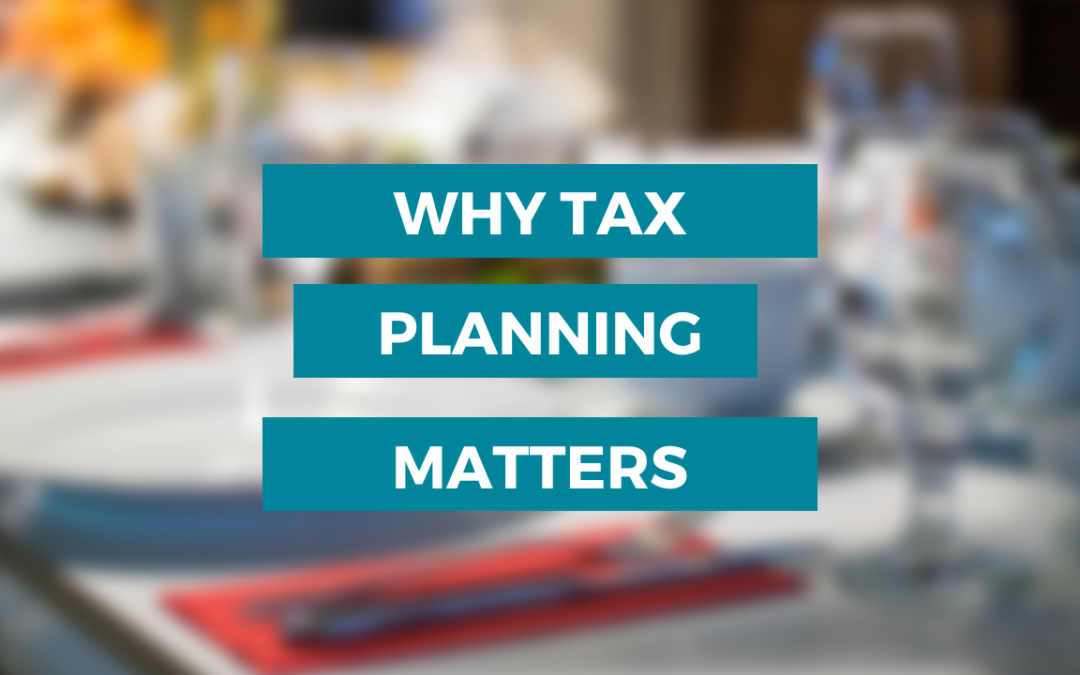Tax planning is the analysis and arrangement of one’s financial situation in order to maximize tax breaks, and minimize tax liabilities in a legal and efficient manner.
Tax rules can be complicated, so it’s important to know them and use them to your advantage, as it can change the amount you end up paying (or recovering) when you file your taxes.
✅ Here are six concepts you should understand before you make your next money move:
1. Tax Planning Starts with Knowing Your Tax Bracket
To plan for your future, you need to know where you are today, so the first thing you need to know is what federal tax bracket you are in.
The United States has a progressive tax system, where people with higher incomes are taxed at higher rates, while those with lower taxable incomes are taxed at lower rates. There are seven federal income tax brackets: 10%, 12%, 22%, 24%, 32%, 35% and 37%.
Regardless of which bracket you’re in, however, you probably won’t pay that rate on your entire income, for two reasons:
- You have to subtract tax deductions to determine your taxable income (which is why your basis usually doesn’t match your salary or total income);
- It is not enough to multiply the tax bracket by the taxable base. The government divides the tax base into brackets and taxes each bracket at the appropriate rate.
For example, let’s say you are single and have $32,000 of taxable income, which puts you in the 12% tax bracket for the 2022 tax year (taxes filed in 2023). But do you pay 12% on the $32,000? No, actually, you pay 10% on the first $10,275; and you pay 12% on the rest.

2. The Difference Between Tax Deductions and Tax Credits
Tax deductions and tax credits may be the best part of tax return preparation, as they both reduce your tax bill, but in very different ways. Knowing the difference can create some very effective tax strategies that reduce your tax bill:
- Tax deductions are specific expenses you have incurred that reduce the taxable portion of your income.
- Tax credits reduce your tax bill dollar for dollar. For example, a tax credit valued at $1,000 reduces your tax bill by $1,000.
3. Apply the Standard Deduction vs. Itemized Deduction
Making a decision on whether to Itemized or take the Standard Deduction is an important part of tax planning, as the choice can make a big difference in your tax bill.
What is the Standard Deduction?
The Standard Deduction makes tax preparation much faster, which is a big reason why many taxpayers take it instead of the Itemized Deduction. The U.S. Congress sets the amount of the Standard Deduction, which is usually adjusted each year for inflation, and also depends on your marital status:
- Single, 2023 Standard Deduction at $13,850
- Married filing jointly, 2023 Standard Deduction at $27,700
- Married filing separately, 2023 Standard Deduction at $13,850
- Head of Household, 2023 Standard Deduction at $20,800
What is the Itemized Deduction?
Instead of applying the Standard Deduction, you can do an Itemized Deduction, which means applying all the individual tax deductions you are entitled to, one at a time.
Generally, people itemize if their itemized deductions add up to more than the standard deduction, and the downside is that it takes longer to file your tax return and you must prove that you are entitled to the deductions.
🔸 Some tax strategies can make itemized returns attractive. At Wave Tax we can prepare your taxes and help you figure out what deductions you are entitled to and whether they add up to more than the standard deduction.
4. Stay on Top of the Most Popular Deductions and Tax Credits
There are hundreds of possible deductions and credits, and there are rules about who can take them. Here are some of the most important ones:
- Adoption Credit – Child adoption expenses
- American Opportunity Credit – College Education Expenses
- Capital Loss Deduction – Losses on sale of stock (to offset capital gains)
- Charitable Contributions – Donation of money, vehicles, artwork, investments, household goods, or other items to charity
- Child and Dependent Care Credit – Day care and similar expenses
- Child Tax Credit – Parenting
- Credit for the Elderly or Disabled – For individuals or their spouses who are retired due to permanent and total disability
- Earned Income Tax Credit – Money for people below certain adjusted gross incomes
- Household Expenses – A portion of your mortgage or rent; property taxes; utilities, repairs and maintenance; and similar expenses if you work from home
- Life-long Learning Credit – Undergraduate, graduate and even non-college courses at accredited institutions
- Medical Expenses – Expenses not reimbursed above a certain threshold
- Mortgage interest – The interest portion of the mortgage payment on the principal residence
- Property Taxes – Real estate taxes
- Residential Energy Tax Credits – Installation of items that make a home energy efficient
- Saver’s Credit – Contributions to an IRA for individuals with incomes below certain thresholds
5. You should Know which Tax Documents to Keep
Keeping your tax returns and the documents you used is critical if you are ever audited. Normally, the IRS has three years to decide whether to audit your return, so keep your records for at least that long, as well as tax records if you file a claim for credit or refund after you filed your original return.
🔸 However, at Wave Tax we recommend keeping records longer in certain cases:
- Six years: If you reported less than 25% of your income
- Seven years: If you wrote off a “worthless value” loss
- Indefinitely: If you committed tax fraud or failed to file a tax return

Photo: Shutterstock
6. Tax strategies to hide income or reduce your tax bill
Deductions and credits are a good way to reduce your tax bill, but there are other tax planning strategies that can help you.
◼ Modify your W-4: The W-4 form tells the company how much tax to withhold from your payroll, and your employer remits that tax to the IRS on your behalf. If you received a huge tax bill when you filed, you may want to increase your withholding, which could help you owe less (or nothing) the next time you file.
If you received a huge refund last year and you’d rather have that money in your paycheck for the entire year, do the opposite and reduce your withholding.
◼ Put money into a 401(k) plan: Your company may offer you a 401(k) savings and investment plan that allows you to deduct the money you set aside for retirement. The IRS does not tax what you divert directly from your paycheck to a 401(k) plan. In 2023, you can put up to $22,500 a year into an account, and if you’re 50 or older, you can contribute up to $30,000.
◼ Deposit money into an IRA: Aside from company-sponsored plans, there are two main types of IRAs: Roth IRAs and traditional IRAs. You have until the tax deadline to deposit money into your IRA from the previous tax year, which gives you extra time to plan your taxes and take advantage of this strategy.
🔸 If you want to learn more about Traditional IRAs and Roth IRAs, you can access our article here
◼ Open a 529 account: These savings accounts, managed by most states and some educational institutions, help you save for college, although you can’t deduct contributions on your federal income tax return, but you can deduct them on your state income tax return if you deposit money into your state’s 529 plan.
There may be gift tax consequences if your contributions plus any other gifts to a particular beneficiary exceed $17,000 in 2023.
◼ Fund your flexible spending account (FSA): If your company offers you a flexible spending account, take advantage of it to reduce your tax bill: the IRS allows you to funnel tax-free money directly from your payroll into your FSA each year; the limit is $3,050 in 2023.
You will have to use the money during the calendar year for medical and dental expenses, but you can also use it for related everyday items, such as bandages, pregnancy test kits, or even acupuncture for you and your qualified dependents. Keep in mind that you can lose what you don’t use.
◼ Use Dependent Care Flexible Spending Accounts (DCFSAs): In 2023, the IRS will exclude up to $5,000 of your salary that the employer diverts to a dependent care FSA account, which means you’ll avoid paying taxes on that money.
This can be key for parents, as before- and after-school care, day care, preschool and day camps are generally allowable uses, and elder care can also be included.
◼ Get the most out of Health Savings Accounts (HSAs): Health savings accounts are tax-exempt accounts that you can use to pay for medical expenses. Contributions to HSAs are tax deductible, and so are withdrawals, as long as you use them for qualified medical expenses.
If you have high-deductible medical coverage for yourself only, you can contribute up to $3,850 in 2023; and if it’s high-deductible family coverage, you can contribute up to $7,750. If you are age 55 or older, you can contribute an additional $1,000 to your HSA.
________________________________________
📝 There are a number of things to keep in mind when doing your tax planning, some of which are tax deductible.
💥 At Wave Tax we are here to help you plan your accounts. Contact us at info@wavetax.us

